Die Welt ist voller vergessener Orte – Relikte vergangener Zeiten, die Staub und Schatten sammeln. Aber einige dieser verlassenen Orte haben so schaurige Geschichten, dass sie im Flüsterton erzählt werden und zu Legenden geworden sind. Von Spukhospitälern bis hin zu verlassenen Städten – hier werden einige die unheimlichen Vergangenheiten der gruseligsten verlassenen Orte der Welt aufgedeckt.
Eastern State Penitentiary, Pennsylvania, USA: Ein Zentrum des Spuks
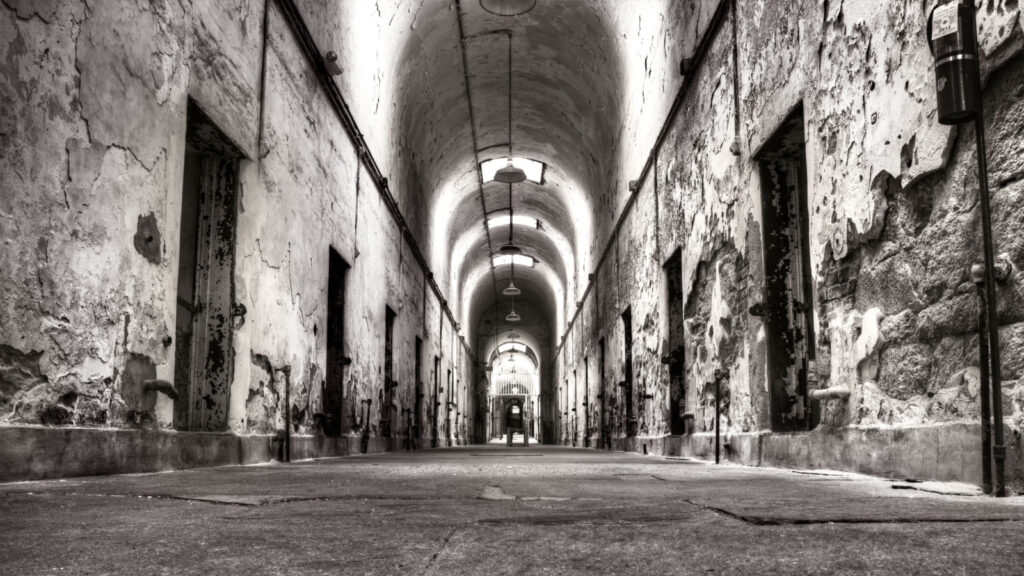
Das 1829 in Philadelphia errichtete Eastern State Penitentiary war einst das berühmteste und teuerste Gefängnis der Welt. Es führte das Konzept der Einzelhaft ein, in der Überzeugung, dass Isolation zur Buße führen könnte. Berüchtigte Insassen wie Al Capone und Willie Sutton trugen zu seinem legendären Ruf bei. 1971 geschlossen, steht das Gefängnis nun in Ruinen, und seine verfallenen Zellenblöcke und leeren Wachtürme befeuern Geschichten von paranormaler Aktivität, einschließlich Erscheinungen und unheimlichen Geräuschen, die als Echos seiner gequälten Insassen gelten.
El Hotel del Salto, Kolumbien
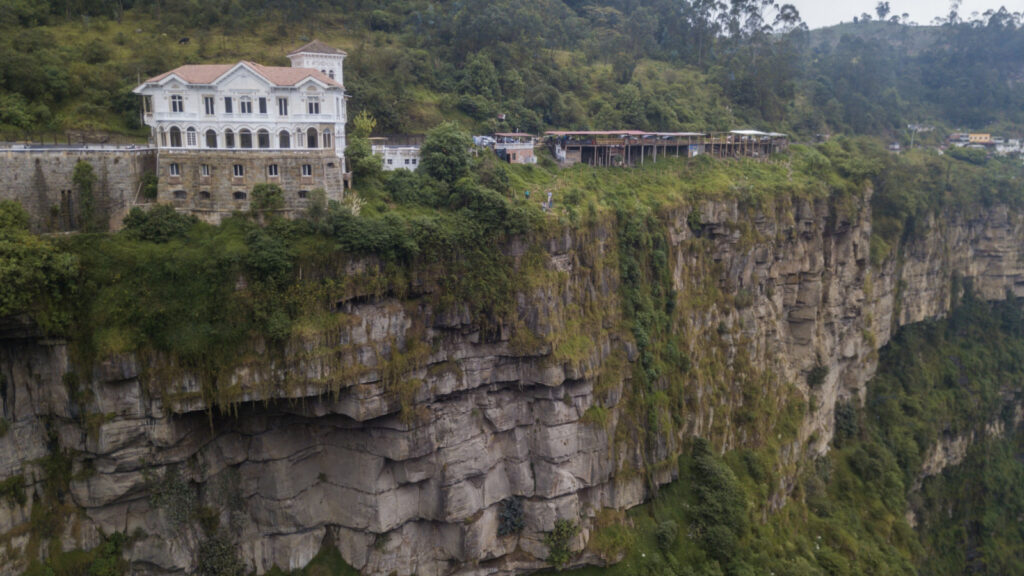
Das El Hotel del Salto, in der Nähe von Soacha in Kolumbien gelegen, bietet einen atemberaubenden Blick auf die Tequendama-Wasserfälle. Es wurde im frühen 20. Jahrhundert als luxuriöser Rückzugsort für wohlhabende Reisende erbaut und erlangte später aufgrund zahlreicher Berichte über Selbstmorde von seinen Klippen den Ruf, verflucht zu sein. Die Legende besagt, dass das Hotel von den Geistern derer heimgesucht wird, die von den Wasserfällen in den Tod gesprungen sind. Der Verfall des Hotels und der Nebel der Wasserfälle tragen zur unheimlichen Atmosphäre bei und machen es zu einem Ort historischer und übernatürlicher Spekulationen. Heute ist es ein Museum, das sich auf die Umwelt- und Kulturgeschichte der Region konzentriert, doch die Legenden seiner geisterhaften Vergangenheit faszinieren weiterhin die Besucher.
Die Insel der Puppen, Mexiko
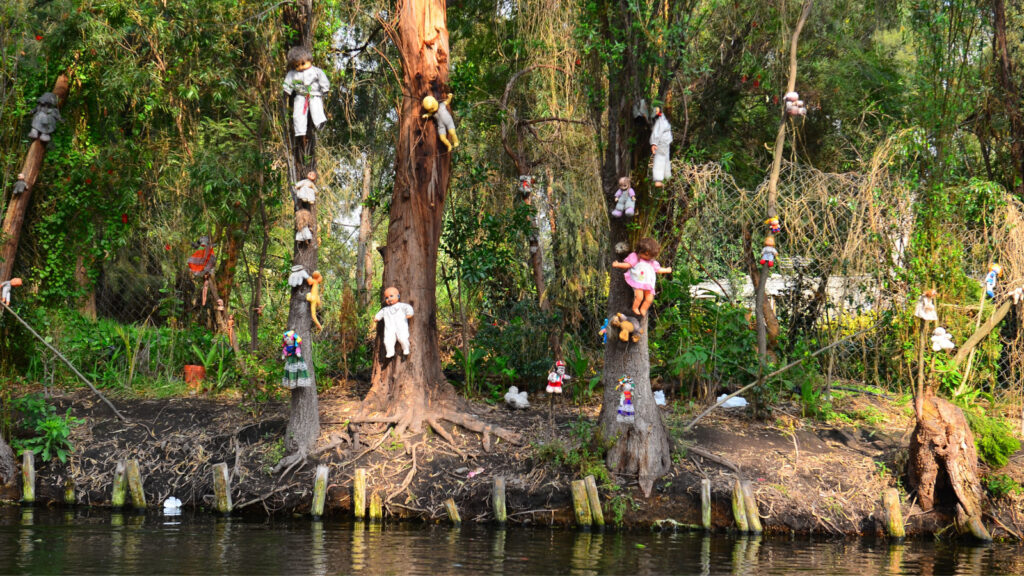
In den Kanälen von Xochimilco in der Nähe von Mexiko-Stadt liegt die Insel der Puppen (Isla de las Muñecas), ein unheimlicher Anblick mit unzähligen Puppen, die von Bäumen und Gebäuden hängen. Der Inselpfleger, Julian Santana Barrera, begann in den 1950er Jahren damit, diese Puppen zu sammeln und auszustellen, nachdem er eine Puppe im Kanal gefunden hatte, die er als Zeichen des Geistes eines ertrunkenen Mädchens betrachtete. Im Laufe der Jahre hängte er mehr Puppen auf, einige mit entstellten Gesichtern und fehlenden Gliedmaßen, um den Geist des Mädchens zu besänftigen. Heute ist die Insel ein ungewöhnliches Touristenziel, das aufgrund seiner unheimlichen Folklore und der tragischen Geschichte von Barreras einsamer Hingabe fasziniert.
Poveglia-Insel, Italien: Von der Pest zum Paranormalen
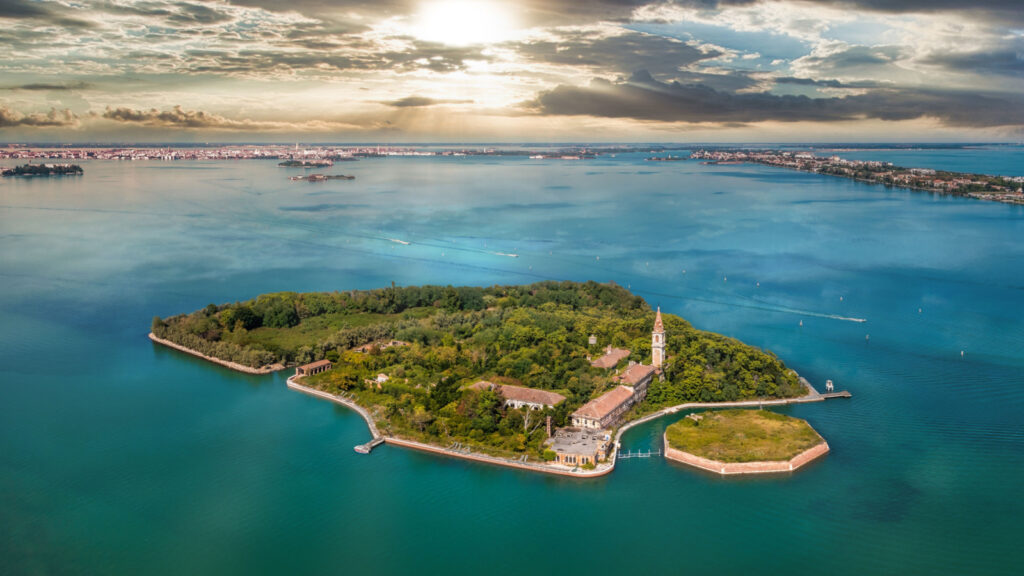
Die Poveglia-Insel, gelegen zwischen Venedig und Lido, birgt eine düstere Vergangenheit. Im 18. Jahrhundert diente sie als Quarantänestation für Opfer der Beulenpest und wurde später zu einem psychiatrischen Krankenhaus, das angeblich Schauplatz unmenschlicher Experimente und Behandlungen war. Seit ihrer Schließung 1968 sind die verfallenden Gebäude und die überwucherten Vegetation der Insel dafür bekannt, von den gequälten Geistern ihrer Vergangenheit heimgesucht zu werden. Ihr Ruf als einer der am meisten heimgesuchten Orte Italiens zieht Paranormal-Enthusiasten und Stadtforscher an, obwohl sie offiziell für die Öffentlichkeit gesperrt ist.
Trans-Allegheny-Lunatic-Asylum, West Virginia, USA: Flüstern der Gequälten Seelen
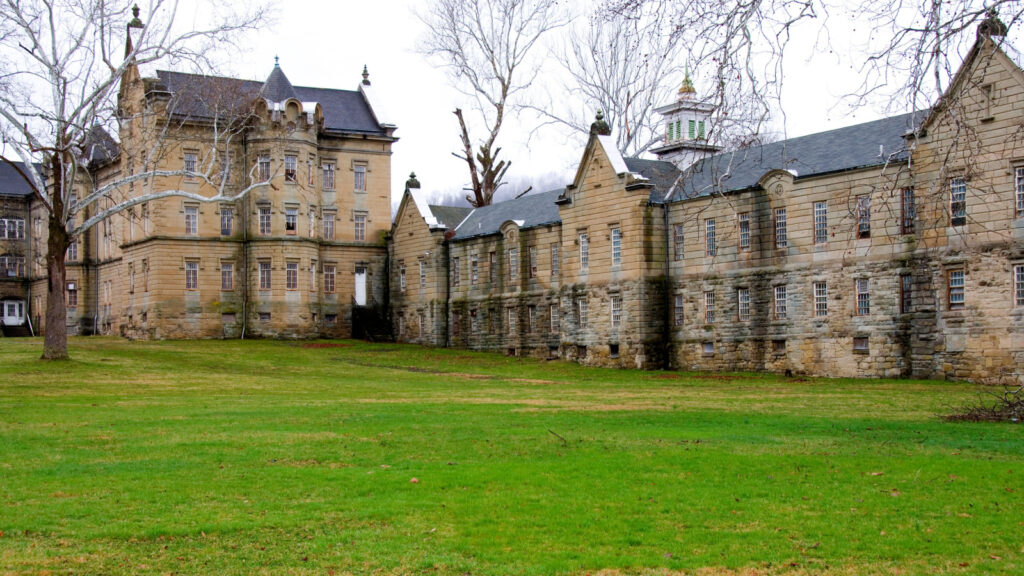
Das Trans-Allegheny-Lunatic-Asylum in West Virginia, das von 1864 bis 1994 in Betrieb war, ist ein Denkmal für die komplexe und oft problematische Geschichte der psychiatrischen Versorgung. Ursprünglich für 250 Patienten gedacht, wurde die Einrichtung berüchtigt für ihre Überfüllung, die auf über 2.400 anwuchs. Die Patienten des Asyls erlebten schlechte Bedingungen und umstrittene Behandlungen. Heute ist das Asylum bekannt für berichtete paranormale Phänomene, wobei Besucher behaupten, Erscheinungen zu sehen, unerklärliche Stimmen zu hören und eine Präsenz der gequälten Seelen zu spüren, die einst in seinen Mauern lebten, was zu seinem Status als einer der am meisten heimgesuchten Orte Amerikas beiträgt.
Hashima-Insel, Japan: Vom Industrieboom zur gespenstischen Stille
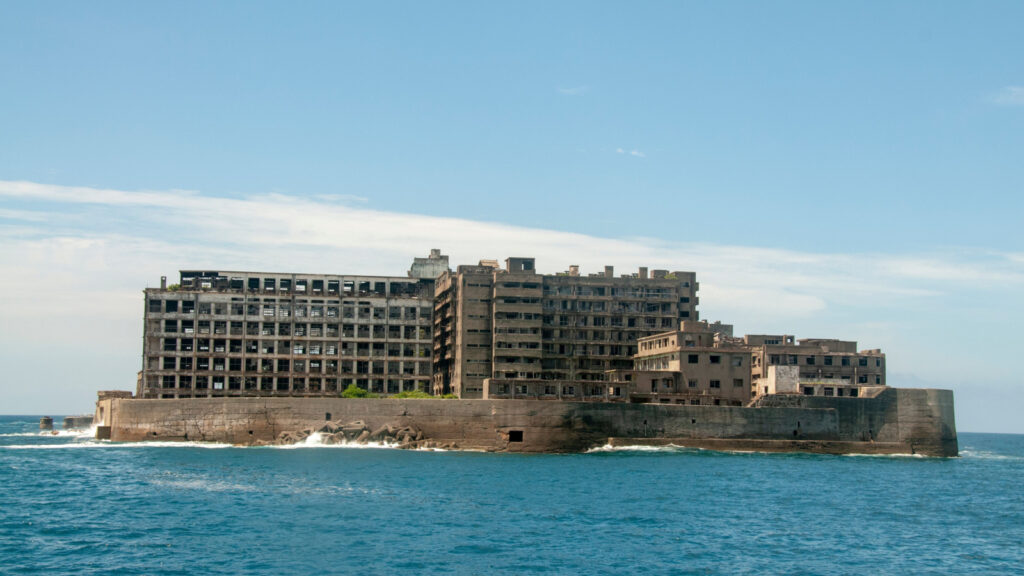
Hashima-Insel, auch bekannt als Gunkanjima oder „Battleship Island“, war von 1887 bis 1974 eine geschäftige Kohleabbaustätte. Einst der Inbegriff der raschen Industrialisierung Japans, hielt diese kleine Insel den Rekord für die höchste Bevölkerungsdichte weltweit. Nach der Schließung der Mine wurde die Insel verlassen, und ihre massiven Betonblöcke und Ufermauern sind stille Zeugen ihres vergangenen Ruhms. Heute ist die Insel ein UNESCO-Weltkulturerbe und zieht Besucher an, die von ihrer dystopisch anmutenden Landschaft und reichen Industriegeschichte fasziniert sind.
Bodie, Kalifornien, USA: Ein eingefrorener Moment im Goldrausch
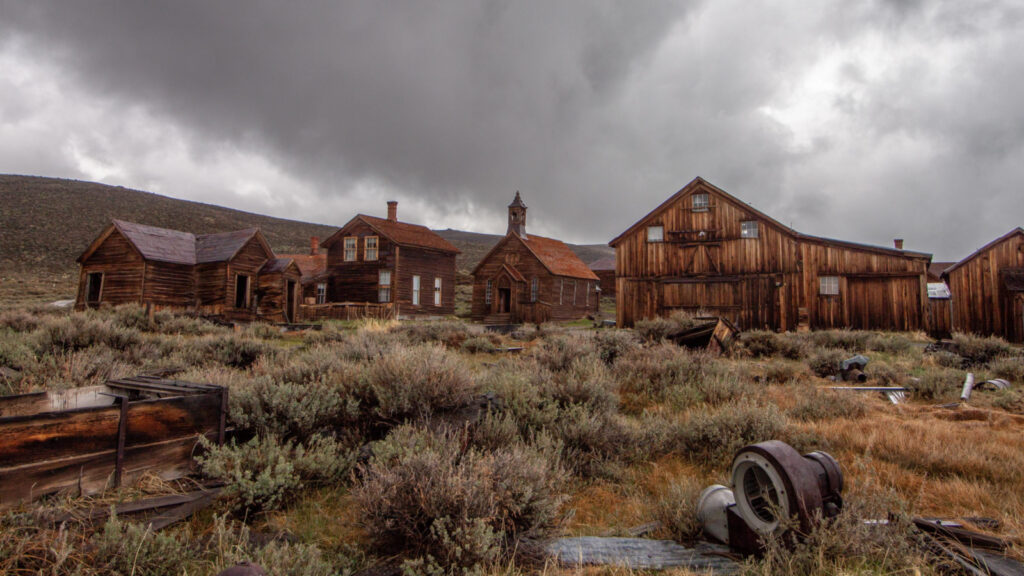
Bodie, gegründet nach einem Goldfund im Jahr 1859, wuchs bis Ende der 1870er Jahre zu einer geschäftigen Stadt heran. Es verkörperte den Wilden Westen mit Geschichten von Gesetzlosigkeit, Schießereien und einem ausgelassenen Nachtleben. Doch als die Goldvorkommen zu Beginn des 20. Jahrhunderts erschöpft waren, verfiel Bodie und wurde zu einer Geisterstadt. Im Bodie State Historical Park können Besucher heute einen Einblick in eine vergangene Ära gewinnen, mit Gebäuden, Besitztümern und sogar Zeitungen, die so hinterlassen wurden, wie sie waren, und den Geist des Goldrauschs heraufbeschwören.
Maunsell Forts, England: Einsame Wächter des Krieges
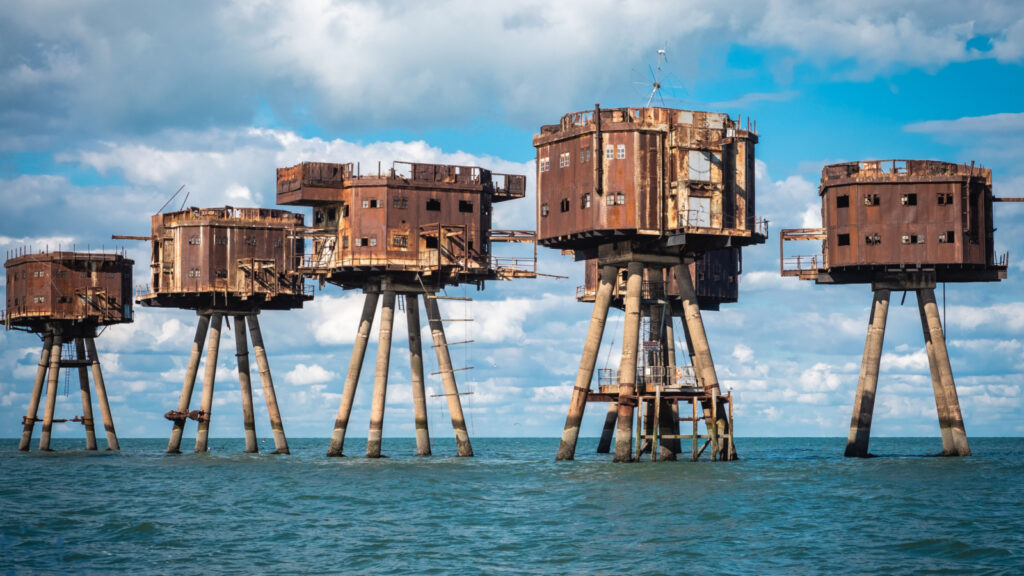
Die Maunsell Forts (Seefestungen), benannt nach ihrem Designer Guy Maunsell, sind eine Gruppe bewaffneter Türme, die während des Zweiten Weltkriegs zum Schutz des Vereinigten Königreichs gegen deutsche Luftangriffe gebaut wurden. Sie befinden sich in den Flussmündungen von Themse und Mersey und wurden in den späten 1950er Jahren außer Dienst gestellt. Heute stehen ihre rostenden, imposanten Strukturen als einsame Wächter der Vergangenheit und sind von den Küsten von Kent und Essex aus sichtbar. Diese Festungen repräsentieren ein einzigartiges Kapitel in der militärischen Ingenieurskunst und sind ein kurioser Anblick für Geschichtsinteressierte und Fotografen.
Oradour-sur-Glane, Frankreich: Ein Dorf eingefroren in Tragödie
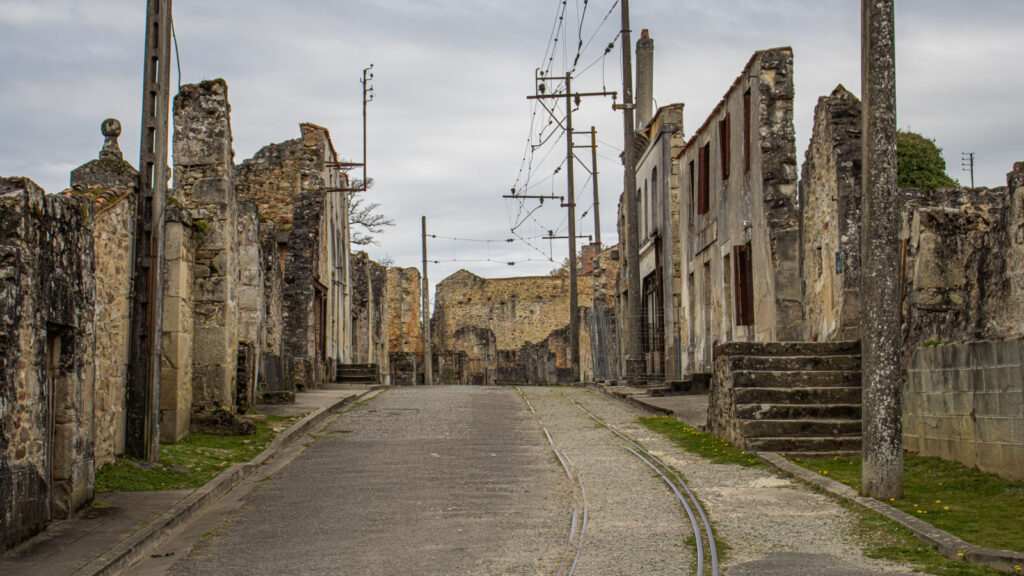
Oradour-sur-Glane in Frankreich steht als feierliches Denkmal für die Schrecken des Krieges. Am 10. Juni 1944, in einem schrecklichen Akt der Vergeltung, massakrierten Nazi-Soldaten 643 Einwohner, darunter Frauen und Kinder. Das Dorf wurde dann in Brand gesteckt, und viele Opfer starben in der Kirche, wo sie Zuflucht gesucht hatten. Heute ist der Ort genau so erhalten, wie er verlassen wurde, und dient als Freilichtmuseum. Verbrannte Autos, durchlöcherte Wände und die Überreste des täglichen Lebens bieten eine unheimliche, greifbare Verbindung zur Vergangenheit, und die erhaltenen Ruinen sind ein eindrucksvolles Zeugnis für die Gräueltaten des Krieges und die Bedeutung, die dunklen Kapitel der Geschichte zu erinnern.
Hellingly-Hospital, England: Ein Asyl der Verlassenheit
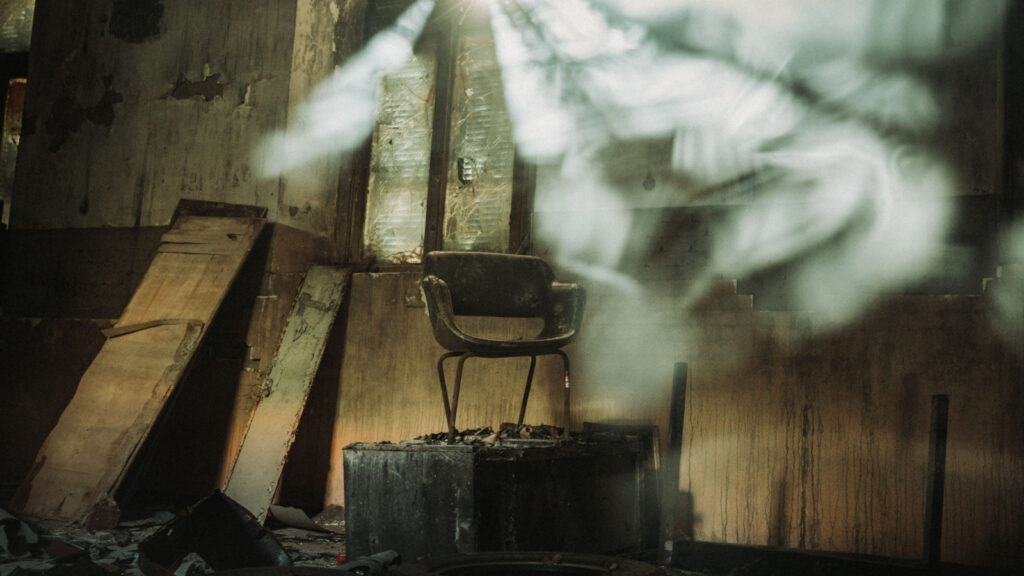
Das 1903 in East Sussex eröffnete Hellingly Hospital (auch bekannt als Hellingly Asylum) war eine psychiatrische Einrichtung, die für ihre fortschrittlichen, wenn auch umstrittenen Behandlungen, einschließlich Elektroschocktherapie, bekannt war. Nach seiner Schließung im Jahr 1994 sind die umfangreichen, inzwischen vandalisierten und mit Graffiti bedeckten Gebäude des Krankenhauses zu einem unheimlichen Anblick geworden. Die verfallenen Strukturen und überwucherten Gelände des Asyls ziehen weiterhin diejenigen an, die von seiner gruseligen Atmosphäre und seiner beunruhigenden Vergangenheit fasziniert sind.
Chateau Miranda, Belgien: Ein Waisenhaus, das die Zeit vergessen hat
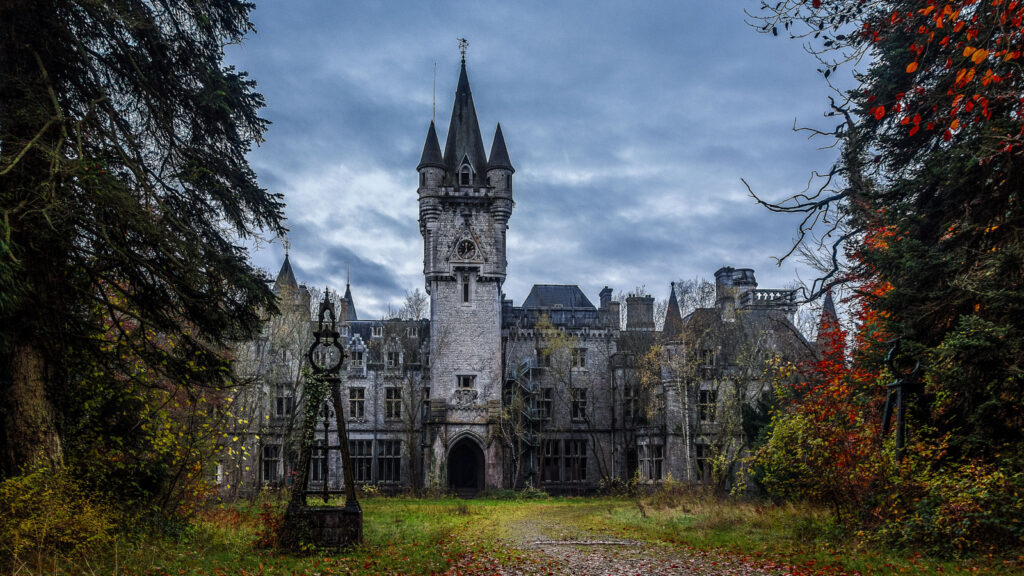
Das Chateau Miranda, auch bekannt als Chateau de Noisy, wurde im 19. Jahrhundert als prächtiges Herrenhaus auf dem belgischen Land erbaut. Mitte des 20. Jahrhunderts wurde es als Waisenhaus und Krankenhaus genutzt. Seit seiner Aufgabe im Jahr 1991 verleiht die gotische Architektur des Schlosses und sein Verfall eine melancholische und geheimnisvolle Atmosphäre. Gerüchte und Geschichten über spukende Echos und Erscheinungen aus der Zeit, als es als Waisenhaus diente, verstärken seine unheimliche Aura und machen es zu einem faszinierenden Ziel für urbane Entdecker und Geisterjäger.
Six Flags Jazzland, New Orleans, USA: Ein Vergnügungspark, zerstört von der Natur
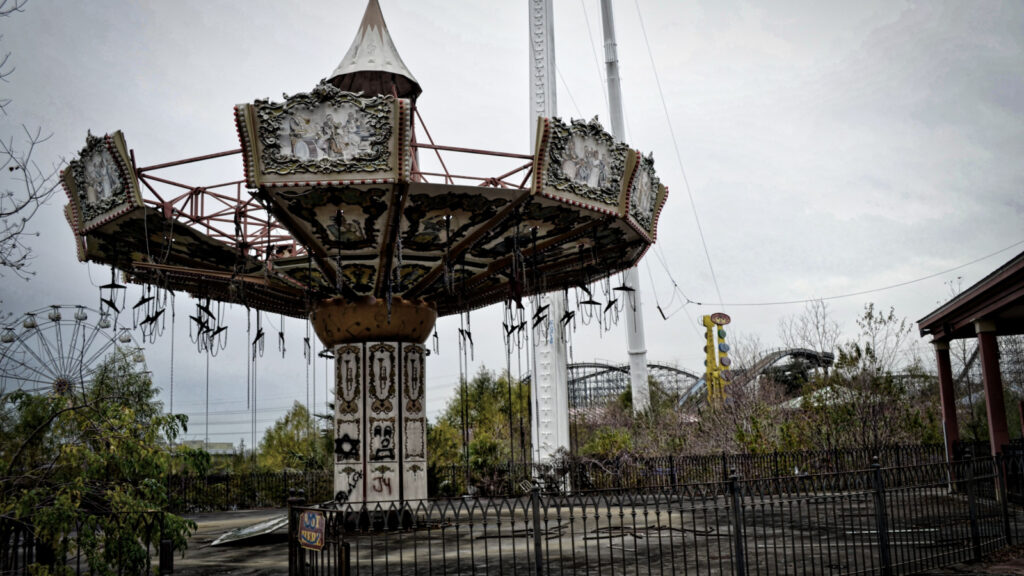
Six Flags Jazzland, einst ein pulsierendes Unterhaltungszentrum in New Orleans, wurde nach der Verwüstung durch den Hurrikan Katrina im Jahr 2005 in Ruinen zurückgelassen. Der Vergnügungspark, mit seiner überwucherten Vegetation, rostenden Fahrgeschäften und zerfallenden Strukturen, steht als gespenstische Erinnerung an die Macht der Natur. Er dient als Symbol für die Herausforderungen, denen sich New Orleans nach dem Hurrikan stellen musste, und sein verlassener Zustand zieht Fotografen und urbane Entdecker an, die von der postapokalyptischen Landschaft fasziniert sind.
Die Queen Mary, Kalifornien, USA: Ein Liner voller Geistergeschichten

Die Queen Mary, ein ausgemusterter britischer Ozeandampfer, der dauerhaft in Long Beach, Kalifornien, vertäut ist, ist reich an Geschichte und Mysterium. Das Schiff diente sowohl als Luxusliner als auch als Truppentransporter während des Zweiten Weltkriegs und ist heute ein Hotel und Museum. Im Laufe der Jahre wurden zahlreiche Berichte über paranormale Aktivitäten gemeldet, darunter Sichtungen von geisterhaften Gestalten, das Geräusch von spielenden Kindern und mysteriöse Schritte. Diese Geschichten haben dazu beigetragen, dass die Queen Mary als einer der am meisten heimgesuchten Orte in Amerika gilt und diejenigen anzieht, die von ihrer maritimen Geschichte und den angeblichen übernatürlichen Vorkommnissen fasziniert sind.
Canfranc-Bahnhof, Spanien: Ein stilles Echo luxuriöser Reisen
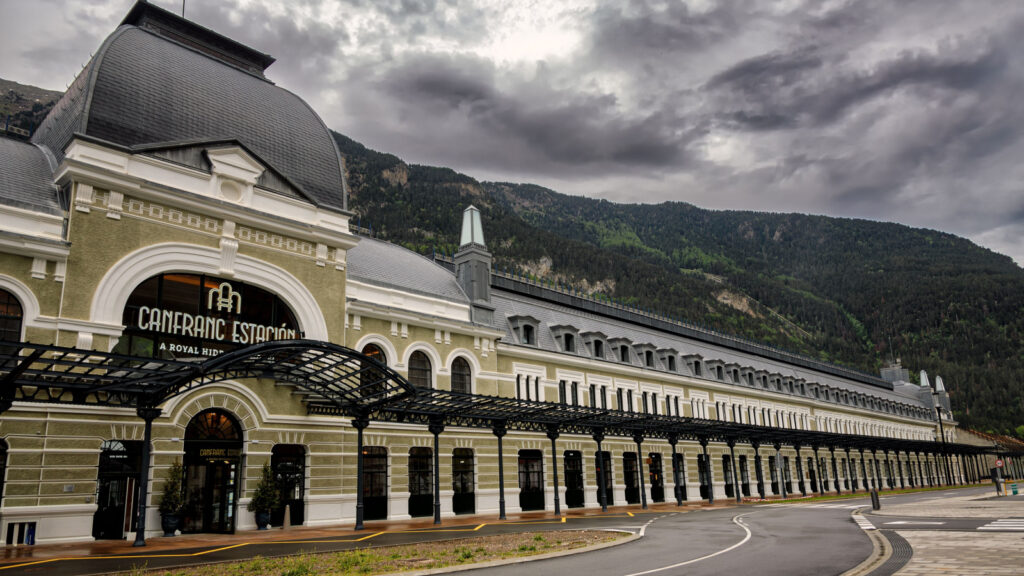
Der Canfranc-Bahnhof, eingebettet in die Pyrenäen zwischen Frankreich und Spanien, war einst ein Symbol luxuriöser internationaler Reisen. Eröffnet im Jahr 1928, machte seine prächtige Architektur und strategische Lage ihn zu einem wichtigen Transitpunkt. Nach einem Zugunglück im Jahr 1970 und der anschließenden Schließung der internationalen Linie verfiel der Bahnhof jedoch. Heute hallen seine prächtigen Hallen und Bahnsteige, obwohl sie still und verlassen sind, immer noch von der Opulenz vergangener Zeiten wider und machen ihn zu einem faszinierenden Ort für Geschichtsinteressierte und Fotografen, die von seiner Pracht und melancholischen Schönheit angezogen werden.
Kolmannskuppe, Namibia: Vom Wüstensand verschlungen
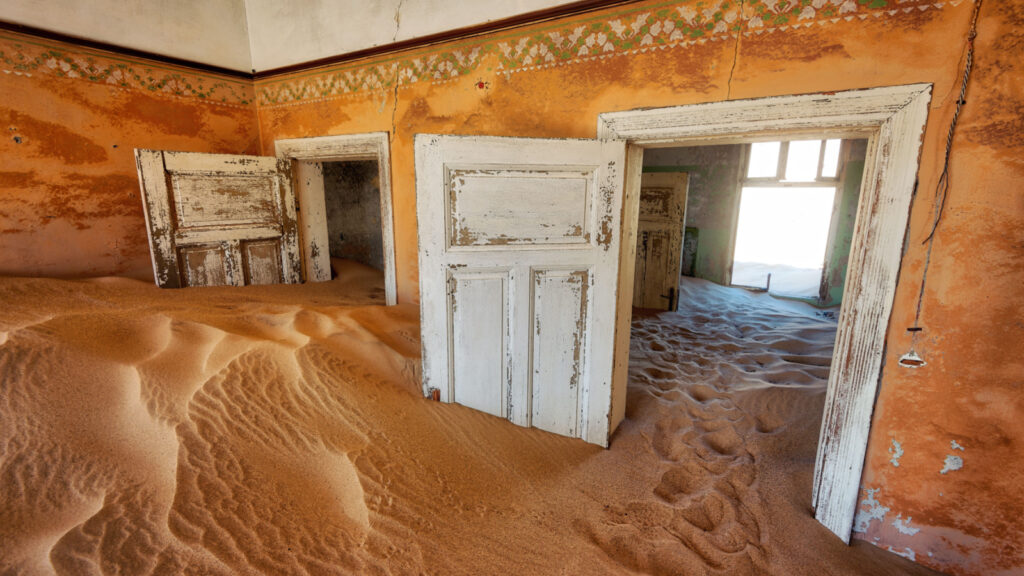
Kolmannskuppe, gelegen in der Namib-Wüste in Namibia, war einst eine geschäftige Diamantenminenstadt nach der Entdeckung von Diamanten im Jahr 1908. Dieser Reichtum brachte einen Zustrom europäischer Siedler, was zu einem Bauboom führte, der Häuser, ein Krankenhaus und sogar einen Ballsaal umfasste. Doch als die Diamantenvorkommen erschöpft waren und reichere Lagerstätten anderswo gefunden wurden, wurde Kolmannskuppe Mitte der 1950er Jahre verlassen. Heute ist es eine Geisterstadt, deren einst prächtige Gebäude allmählich vom Wüstensand verschlungen werden. Diese Übernahme der Natur über menschliche Strukturen bietet eine lebendige Illustration der Vergänglichkeit menschlicher Unternehmungen und der unaufhaltsamen Macht der Natur.
Bannerman’s Castle, New York, USA: Ein Waffenlager in Ruinen
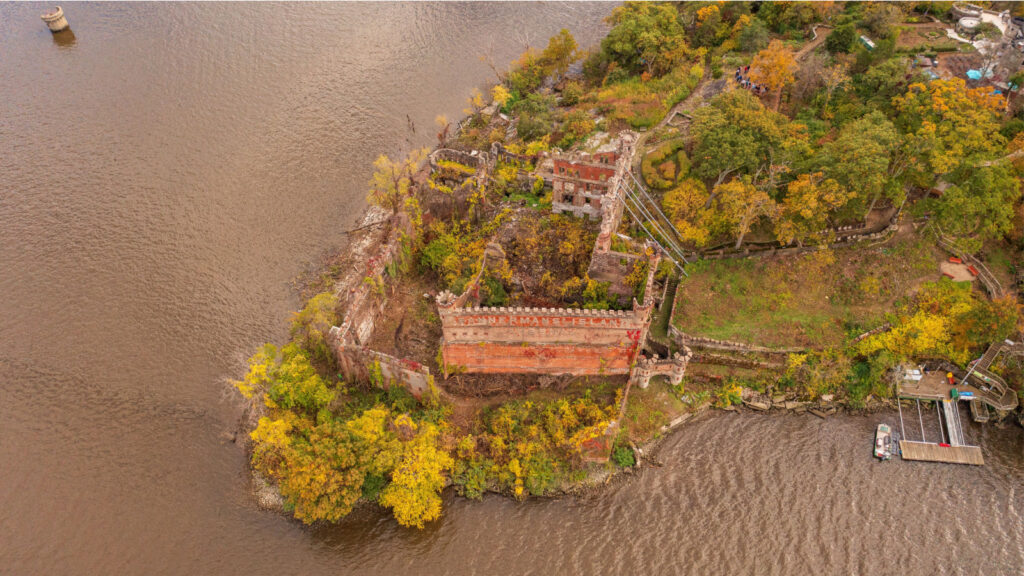
Francis Bannerman VI errichtete Bannerman’s Castle auf Pollepel Island im Hudson River Anfang des 20. Jahrhunderts. Diese schlossartige Festung war als Lager für die überschüssige Militärausrüstung gedacht, die er nach dem Spanisch-Amerikanischen Krieg von der US-Regierung gekauft hatte. Nach Bannermans Tod im Jahr 1918 und einer anschließenden Explosion im Jahr 1920 verfiel die Burg. Heute bieten ihre Ruinen eine malerische, aber melancholische Kulisse am Fluss und spiegeln eine vergangene Ära des Handels und militärischer Überschüsse wider. Sie steht als Denkmal für die Exzentrizitäten ihres Erbauers und die Zerstörung durch die Zeit.
Aokigahara-Wald, Japan: Das geheimnisvolle Meer aus Bäumen

Aokigahara, bekannt als das Meer aus Bäumen, ist ein Wald an der Nordwestflanke des Fuji in Japan. Berühmt für seine dichten Wälder und ruhige Schönheit, hat er auch einen düsteren Ruf als häufiger Ort für Suizide, was ihm den Spitznamen „Selbstmordwald“ einbrachte. Das dichte Laub und die stille Atmosphäre des Waldes verleihen ihm eine unheimliche und nachdenkliche Stimmung, und die örtlichen Behörden haben Maßnahmen ergriffen, um Suizide in der Region zu verhindern. Er bleibt ein Ort von natürlicher Schönheit und nachdenklicher Besinnung, verwoben mit Mythen, Legenden und den eindringlichen Realitäten des modernen Lebens.
Tschernobyl-Vergnügungspark, Ukraine: Freude, unterbrochen durch Tragödie
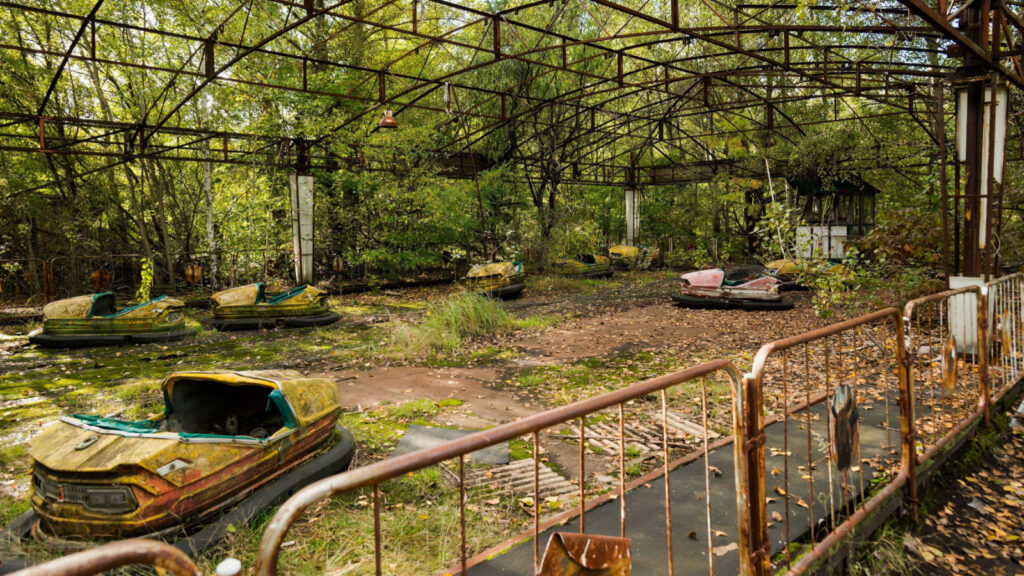
Der Tschernobyl-Vergnügungspark in Pripjat sollte am 1. Mai 1986 im Rahmen der Maifeierlichkeiten eröffnet werden. Doch die Tschernobyl-Katastrophe am 26. April, nur wenige Tage vor der geplanten Eröffnung, führte zur sofortigen Evakuierung der Stadt. Der Vergnügungspark, mit seinem ikonischen Riesenrad und den Autoscootern, wurde am 27. April kurzzeitig für die Kinder der Stadt geöffnet, bevor der Evakuierungsbefehl erteilt wurde. Heute bieten diese rostenden Fahrgeschäfte einen scharfen Kontrast zur Trostlosigkeit um sie herum und dienen als unheimliches Symbol für die plötzliche und tragische Unterbrechung des Alltagslebens durch die Katastrophe.
Ryugyong-Hotel, Pjöngjang, Nordkorea: Ein imposantes, unvollendetes Projekt
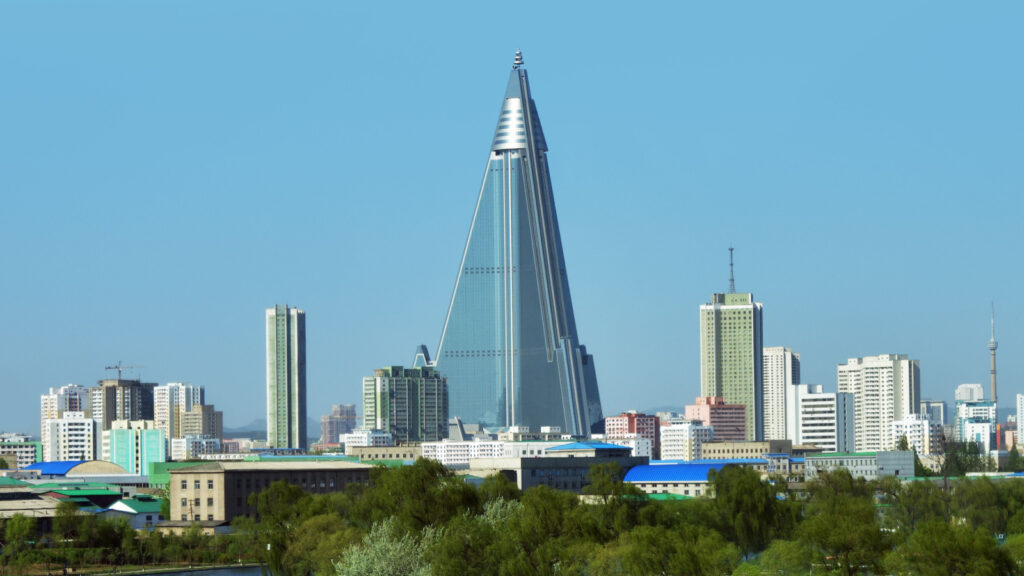
Das Ryugyong-Hotel in Pjöngjang, Nordkorea, ist ein ikonischer 105-stöckiger Wolkenkratzer, dessen Bau 1987 begann. Ursprünglich als Symbol für die Stärke und den Wohlstand des Landes gedacht, wurde das Projekt 1992 aufgrund wirtschaftlicher Schwierigkeiten eingestellt. Das massive, unvollendete Gebäude, oft als „Hotel des Untergangs“ bezeichnet, dominiert seit Jahrzehnten die Skyline von Pjöngjang als ein scharfer Reminder an gescheiterte Ambitionen und wirtschaftliche Herausforderungen. Trotz mehrerer Ankündigungen über seine bevorstehende Fertigstellung bleibt das Hotel ungenutzt, ein imposantes Emblem für Nordkoreas Isolation und unerfüllte architektonische Träume.
Pripyat, Ukraine: Eine nukleare Geisterstadt
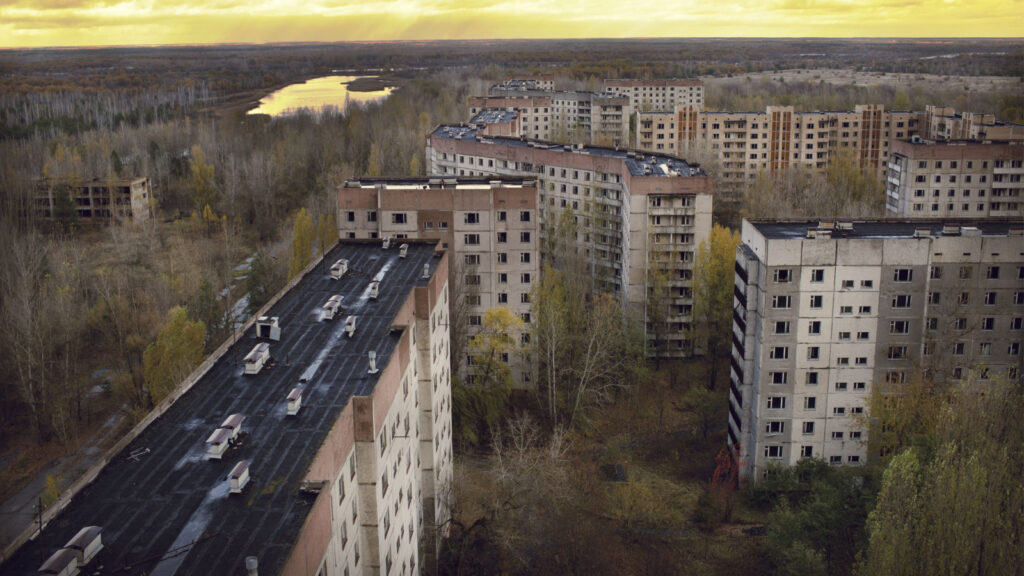
Pripyat, eine Stadt in der Nähe des Kernkraftwerks Tschernobyl, war einst eine florierende Gemeinschaft mit etwa 49.000 Einwohnern, hauptsächlich Kraftwerksarbeitern und ihren Familien. Der katastrophale Atomunfall im April 1986 führte zur sofortigen Evakuierung der Stadt und verwandelte sie über Nacht in eine Geisterstadt. Die Stadt, die innerhalb der Tschernobyl-Sperrzone liegt, ist eine unheimliche Zeitkapsel. Verlassene Gebäude, Schulen und Vergnügungsparks werden langsam von der Natur zurückerobert. Zurückgelassene persönliche Gegenstände, die bei der hektischen Flucht vor der Strahlung zurückgelassen wurden, verstärken die unheimliche Atmosphäre. Die Stadt ist ein eindringliches Zeugnis für die verheerenden Auswirkungen von Nuklearkatastrophen.
Das verlassene Dorf Kayaköy, Türkei: Ein Zeugnis des Bevölkerungsaustauschs
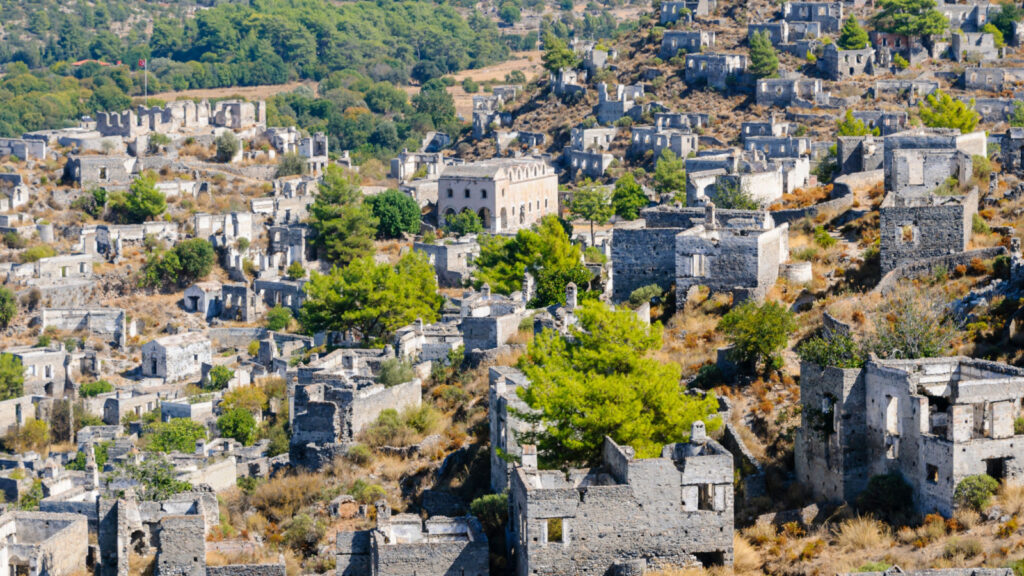
Kayaköy, gelegen im Südwesten der Türkei, war einst eine blühende Gemeinschaft, die von griechisch-orthodoxen Christen und Türken bewohnt wurde. Doch nach dem Griechisch-Türkischen Krieg und dem anschließenden Bevölkerungsaustausch zwischen Griechenland und der Türkei im Jahr 1923 wurde das Dorf verlassen. Über 3.500 Häuser, zwei Kirchen und Schulen stehen nun als leere Hüllen da, überwuchert von Vegetation und verwittert durch die Zeit. Diese Geisterstadt dient als eindrucksvolle Erinnerung an die turbulente Geschichte des 20. Jahrhunderts, die tiefgreifenden Auswirkungen politischer Entscheidungen auf das Leben gewöhnlicher Menschen und die bleibende Präsenz kulturellen Erbes inmitten der Ruinen.
SS America Schiffswrack, Kanarische Inseln

Die SS America, ein einst prächtiger Ozeandampfer, der 1940 gebaut wurde, fand seine letzte Ruhestätte vor der Küste von Fuerteventura auf den Kanarischen Inseln. 1994, während sie nach Thailand geschleppt wurde, um in ein schwimmendes Hotel umgewandelt zu werden, riss das Schiff während eines Sturms von den Schlepptrossen los und lief schließlich auf Grund. Das Schiffswrack der SS America, auch bekannt als SS American Star, ist zu einem unheimlichen Schauspiel geworden. Die Einflüsse der Zeit und des Meeres haben das einst majestätische Schiff zu einem zerfallenden Skelett reduziert und Schaulustige anzieht. Der allmähliche Zerfall des Schiffes unter den unermüdlichen atlantischen Wellen ist eine bewegende Metapher für die Unausweichlichkeit von Veränderung und Verfall.
Michigan Central Station, USA
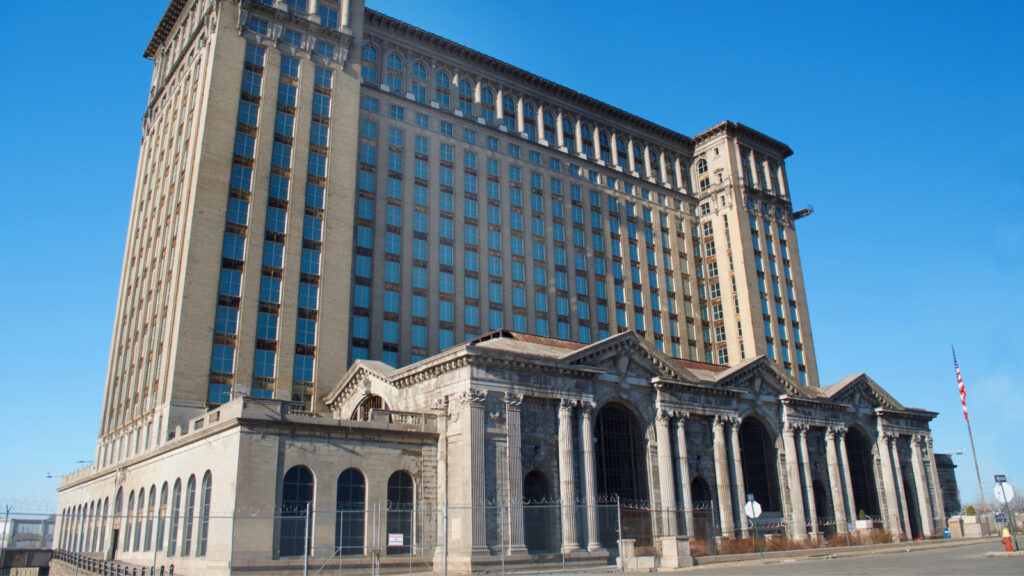
Der Michigan Central Station, eröffnet 1913, war einst ein geschäftiges Verkehrsdrehkreuz in Detroit. Im Beaux-Arts-Stil gestaltet, symbolisierte es den Wohlstand der Stadt. Mit der Zunahme des Autobesitzes und dem Rückgang des Bahnverkehrs sah der Bahnhof jedoch immer weniger Passagiere und wurde 1988 geschlossen. Seitdem ist die grandiose Architektur des Bahnhofs verfallen und steht als Symbol für den wirtschaftlichen Abschwung und die städtische Verwahrlosung Detroits. Bemühungen zur Renovierung und Umnutzung des Gebäudes wurden im Laufe der Jahre vorgeschlagen und spiegeln die Widerstandsfähigkeit und Hoffnung der Stadt auf Erneuerung wider.
Überwucherte Eisenbahn in Paris
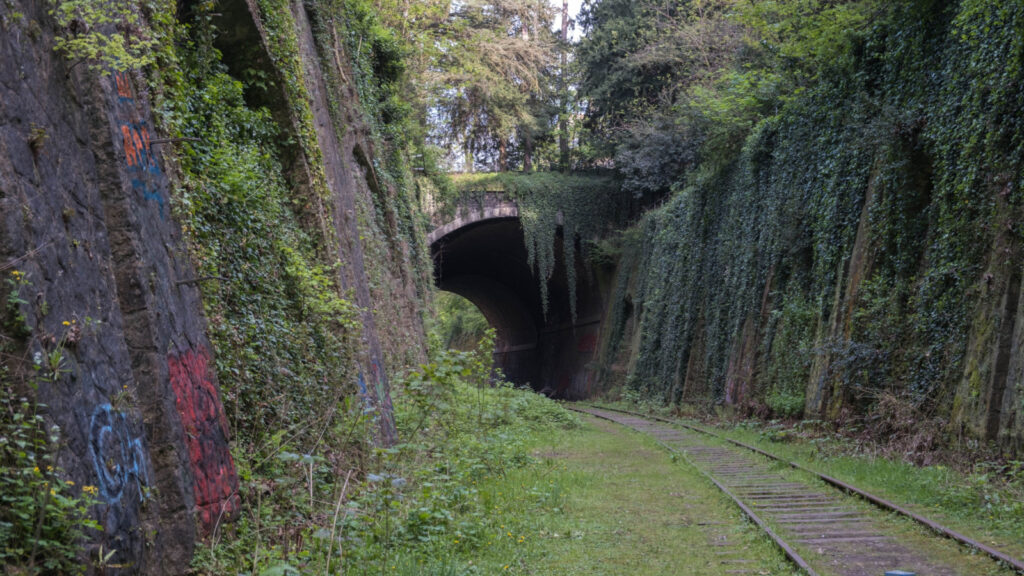
Die Petite Ceinture, eine historische Eisenbahnlinie in Paris, wurde Mitte des 19. Jahrhunderts gebaut, um die wichtigsten Bahnhöfe der Stadt zu verbinden. Einst ein wesentlicher Bestandteil des Pariser Transports, fiel sie mit der Expansion des U-Bahn-Systems in Ungnade. Heute sind große Teile der Linie verlassen, und die Natur hat sich die Gleise und Bahnhöfe zurückerobert. Die überwucherte Eisenbahn ist zu einer städtischen Oase geworden, ein versteckter, grüner Raum in der geschäftigen Stadt. Sie bietet einen einzigartigen Einblick in die Vergangenheit von Paris und dient als Zufluchtsort für die Tierwelt sowie als beliebter Ort für urbane Entdecker und Naturliebhaber.
Verlassenes Kraftwerk, Belgien
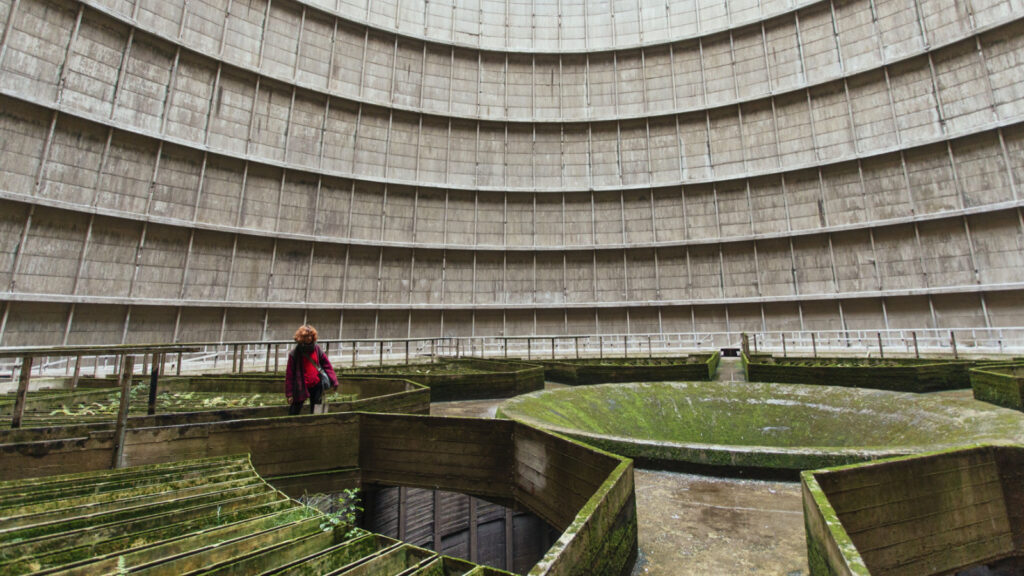
Dieses riesige verlassene Kraftwerk in Belgien, bekannt als Power Plant IM, war einst ein Kohlekraftwerk, das erheblich zur Energieversorgung des Landes beitrug. Erbaut im frühen 20. Jahrhundert, war es eines der größten kohlebefeuerten Kraftwerke Belgiens. Doch aufgrund von Umweltverschmutzung wurde es Anfang der 2000er Jahre stillgelegt. Der riesige Kühlturm und die weiten, leeren Industrieflächen des Kraftwerks sind ein auffallendes Beispiel für den industriellen Niedergang. Seine stillen, imposanten Strukturen stehen als Denkmal für das vergangene Zeitalter der kohlebefeuerten Industrie, im Kontrast zu dem heutigen Umweltbewusstsein und dem Übergang zu erneuerbaren Energiequellen.
Waverly Hills Sanatorium, Kentucky, USA: Ein Erbe des Todes und Mysteriums

Das Waverly Hills Sanatorium, das von 1910 bis 1961 in Louisville, Kentucky, betrieben wurde, war ursprünglich gebaut, um Tuberkulosepatienten während der „Weißen Pest“-Epidemie zu behandeln. Da die Krankheit Tausende von Leben forderte, wurde das Sanatorium erweitert und zu einer der größten Einrichtungen seiner Art. Geschichten über experimentelle Behandlungen und die hohe Sterblichkeitsrate haben zu seinem Ruf als einer der am meisten heimgesuchten Orte Amerikas beigetragen. Geistertouren und paranormale Untersuchungen werden von Berichten über Schattenfiguren, geisterhafte Kinder und unerklärliche Stimmen angezogen, die durch seine verlassenen Hallen hallen.
Sanatorio Durán, Costa Rica
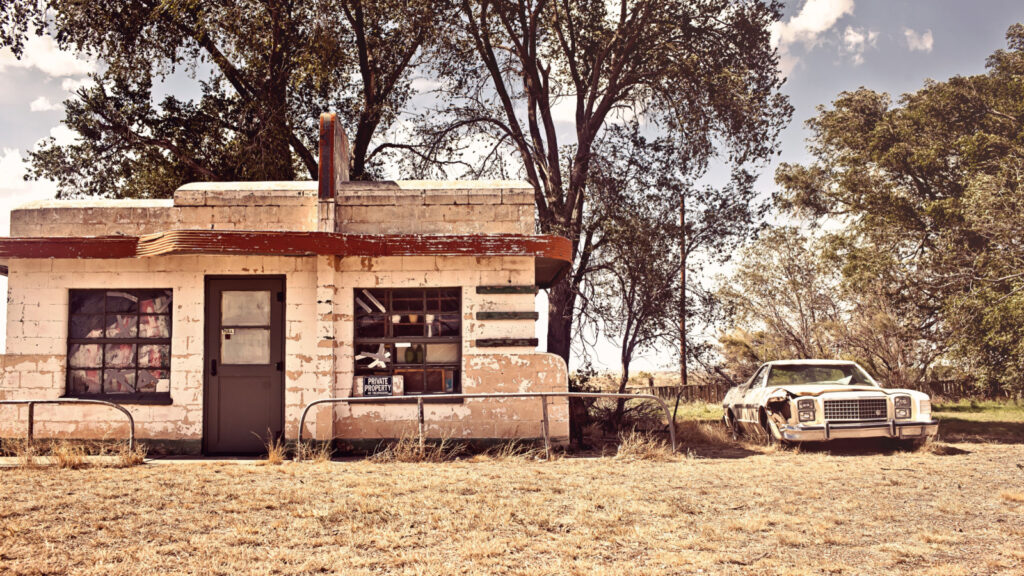
Sanatorio Durán, eingebettet in den Bergen nahe Cartago, Costa Rica, wurde 1918 von Dr. Carlos Durán als Sanatorium für Tuberkulosepatienten gegründet. Die kühle, klare Bergluft wurde als vorteilhaft für diejenigen angesehen, die an der Krankheit litten. Nach dem Rückgang der Tuberkulose diente es verschiedenen Zwecken, darunter als Gefängnis und Waisenhaus. Die verlassenen, von Nebel umhüllten Gebäude des Sanatoriums sollen verflucht sein, mit Berichten über Erscheinungen und unerklärliche Geräusche, die zu seinem Reiz als Ziel für diejenigen beitragen, die sich für das Paranormale interessieren.
Sanatorio Duran, Costa Rica
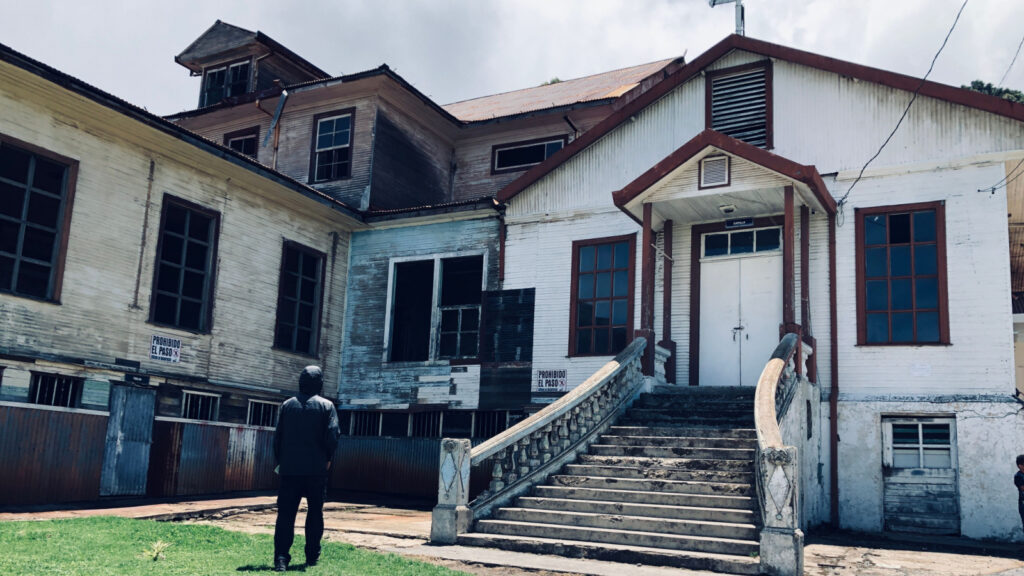
Sanatorio Duran, nestled in the mountains near Cartago, Costa Rica, was founded by Dr. Carlos Durán in 1918 as a sanatorium for tuberculosis patients. The cool, crisp mountain air was considered beneficial for those suffering from the disease. After the decline of tuberculosis, it served various purposes, including a prison and an orphanage. The sanatorium’s abandoned, mist-shrouded buildings are rumored to be haunted, with reports of apparitions and unexplained noises, adding to its allure as a destination for those intrigued by the paranormal.
